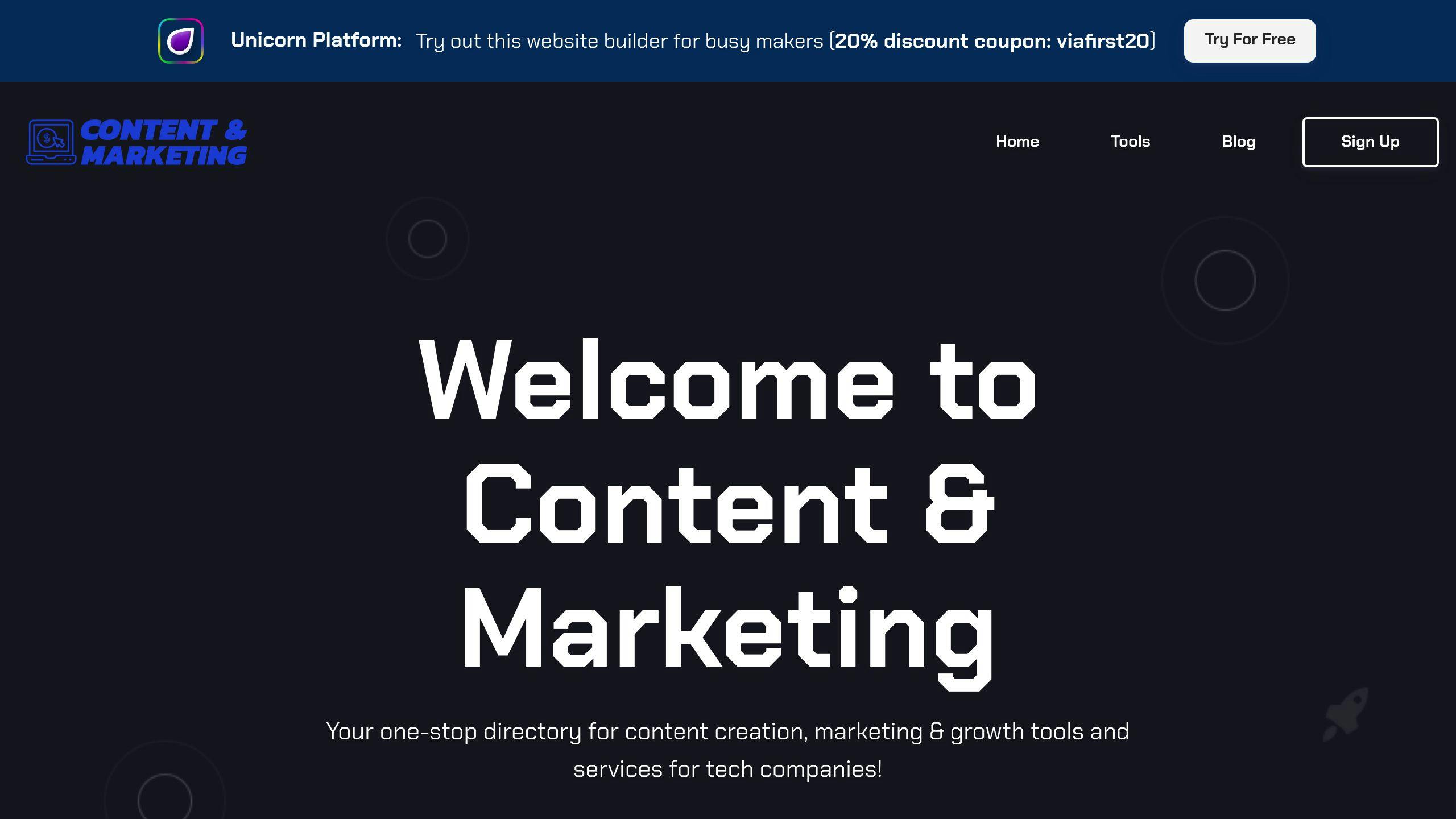Subscription cancellations hurt revenue and customer trust. This guide covers 10 actionable steps to keep subscribers engaged and reduce churn:
- Simplify Onboarding: Make it easy for new users to get started with clear instructions and personalized guidance.
- Track User Engagement: Monitor activity to spot at-risk users early and take action.
- Collect Feedback: Use surveys to understand why customers leave and fix common issues.
- Offer Flexible Plans: Provide options like pausing, downgrading, or custom payment schedules.
- Communicate Effectively: Send personalized messages, updates, and celebrate milestones.
- Simplify Cancellations: Offer a hassle-free process with alternatives like discounts or downgrades.
- Use Retention Offers: Provide incentives or win-back campaigns to re-engage users.
- Leverage Tools: Use analytics and subscription management tools to identify churn risks.
- Focus on Long-Term Retention: Track metrics like churn rate and customer lifetime value to improve strategies.
- Refine Continuously: Act on feedback, update offerings, and be transparent about value.
Related video from YouTube
1. Make Onboarding Simple
Getting new subscribers comfortable and engaged right away is key to keeping them around. A straightforward onboarding process that quickly highlights the benefits of your product can make all the difference.
Welcome New Users
Start by breaking the onboarding process into easy-to-follow steps. Don’t try to introduce every feature at once - focus on the essentials first. This approach helps new users feel at ease rather than overwhelmed.
Here’s what an effective welcome process might include:
- Clear instructions and accessible help guides to get users started.
- Quick support options, like live chat, for immediate assistance.
- Progress indicators that show users how far they’ve come.
- Self-service tools, which studies show 70% of customers prefer.
- Personalized guidance tailored to each user’s goals.
Show Value Early
The first few days are crucial. If users can quickly see how your product solves a problem or helps them achieve something important, they’re less likely to cancel.
To make the onboarding experience more engaging, focus on tailoring it to the user’s specific needs:
- Highlight features that match their goals or use case.
- Offer templates or examples relevant to their industry.
- Provide hands-on setup help if needed.
- Set clear, achievable goals for the first week to keep them motivated.
2. Track How Users Engage
Keeping an eye on how subscribers interact with your service is key to reducing cancellations.
Measure Key Metrics
Here are some important metrics to monitor:
- Overall Engagement: Check how often users log in and how much time they spend on core features.
- Feature and Goal Progress: Track how users adopt features and whether they complete important objectives.
- Support Interactions: Measure response times and how quickly issues are resolved.
Set up automated alerts to flag sudden drops in activity or long periods of inactivity.
Spot At-Risk Users
Catching signs of disengagement early helps you step in before users decide to leave. Look out for these red flags:
- Fewer logins over time
- Decreased use of key features
- Skipped onboarding steps
- Missed milestones
- Ignored support messages
To stay on top of user engagement, consider these strategies:
- Create a scoring system: Assign points based on user actions to gauge satisfaction and detect risks. For instance, users who complete onboarding or regularly use advanced features might score higher.
- Define normal usage benchmarks: Understand typical engagement levels for different user groups so you can identify unusual patterns quickly.
- Set up alerts for engagement drops: Use thresholds to trigger outreach when user activity falls below a certain level.
Once you’ve identified users who might be at risk, the next step is to gather feedback and address their concerns before they decide to cancel.
3. Collect and Use Feedback
Getting feedback from your customers is key to understanding why they stick around - or why they leave. A recent study shows that 40% of customers prefer quick and easy self-service feedback options.
Use Surveys to Learn
Short, targeted surveys can give you helpful insights without annoying your customers. Use a mix of regular satisfaction surveys and exit surveys to gather useful information when users decide to cancel.
Here are some effective survey types and the questions they can address:
| Survey Type | Key Questions |
|---|---|
| NPS Survey (Quarterly) | How likely are you to recommend our service? |
| Usage Survey (Monthly) | Are you satisfied with the features? What do you need? |
| Exit Survey (At cancellation) | What’s the primary reason for leaving? |
Fix Common Problems
The FTC's 'Click to Cancel' rule highlights the need for clear communication when managing subscriptions. Use the feedback you collect to make real improvements by:
- Tackling recurring issues that lead to cancellations. Quick fixes for common problems can make a big difference.
- Spotting patterns in feedback to address frustrations before they become major issues.
- Offering self-service tools that directly solve problems, giving users fast and convenient solutions.
For example, when research showed that 42% of consumers forget about their subscriptions, many companies started sending regular reminders to keep customers engaged. Make it simple for customers to voice their concerns and show them you're taking action to improve.
4. Offer Flexible Plans
After gathering feedback to understand your customers' needs, consider offering flexible subscription options. These can help address their concerns and lower the chances of cancellations. Showing customers that you're willing to accommodate their needs can reduce frustration and make them more likely to stick around.
Pause or Downgrade Options
Letting customers take control of their subscriptions can make a big difference. By offering options like pausing or downgrading their plans, you give users the ability to adjust their subscriptions as their circumstances change. For example, Userpilot allows customers to downgrade or pause their accounts during the cancellation process. This strategy has been successful in keeping users who might have otherwise canceled entirely.
Flexible Payment Choices
Giving customers more payment options can also help with retention. Here are some examples:
| Payment Option | Customer Benefit | Business Impact |
|---|---|---|
| Monthly Plans | Easier to commit to | Higher processing costs |
| Annual Plans | Saves money for customers | Boosts cash flow |
| Quarterly Billing | A middle ground between options | Fewer payment processing fees |
| Custom Payment Dates | Aligns with customer schedules | Increases payment success rates |
For example, The Financial Times uses a "before you go" message that highlights subscription perks and payment options, giving customers a chance to reconsider before canceling.
sbb-itb-645e3f7
5. Communicate Better with Customers
Building strong connections with your customers starts with clear and personalized communication. By tailoring your messages and recognizing key milestones, you can strengthen relationships and keep retention rates high.
Send Targeted Messages
The key to effective communication lies in understanding your audience. Use data like customer behavior, surveys, or usage analytics to group users into segments. Then, craft messages that speak directly to each group’s needs and interests. For instance, Netflix leverages viewing history to send personalized recommendations and updates about new shows or movies that match subscribers' preferences.
| Communication Type | Purpose | Impact on Retention |
|---|---|---|
| Usage Updates | Inform customers about feature utilization | Reminds users of your product's value |
| Product Updates | Share new features and improvements | Highlights ongoing development |
| Educational Content | Help customers get more out of your product | Boosts product adoption |
| Renewal Reminders | Notify users about upcoming billing cycles | Prevents payment-related cancellations |
Celebrate Customer Milestones
Acknowledging customer milestones can create emotional connections and encourage loyalty. When customers feel appreciated, they’re more likely to stick around. A great example is Spotify’s "Wrapped" feature, which celebrates users’ listening habits over the year, creating a sense of personal connection and engagement.
Some milestones worth celebrating include:
- Usage achievements: Highlight when users hit key metrics, like completing 100 tasks or reaching a specific goal within your platform.
- Subscription anniversaries: Show appreciation for long-term loyalty with perks or special recognition.
- Feature adoption: Celebrate when customers start using new features successfully, reinforcing their value.
"Regular communication through personalized messages can increase customer retention by up to 25% when combined with proper audience segmentation and milestone recognition strategies."
With strong communication practices in place, the next step is to focus on simplifying the cancellation process to retain even more customers.
6. Create a Helpful Cancellation Process
Making it easy for customers to cancel might sound like a bad idea, but in reality, a simple and transparent process can build trust and even boost long-term loyalty. Research shows that 70% of customers expect to manage their subscriptions through self-service portals, so meeting this expectation is key.
Keep the Process Simple
A straightforward cancellation process reduces frustration and keeps things professional. The FTC's proposed "Click to Cancel" rule emphasizes how important it is to make this step hassle-free. Here's what to include:
| Process Step | Purpose | Impact |
|---|---|---|
| Self-Service Portal | Simplifies account management | Improves customer satisfaction |
| Exit Survey (2-3 questions) | Understand why they’re leaving | Offers insights for improvement |
| Confirmation Message | Provides clear communication | Leaves a positive final impression |
For example, your confirmation message could say: "Your subscription has been successfully canceled. We hope to see you again soon!"
Offer Alternatives Before They Leave
Before customers finalize their cancellation, try offering alternatives that might address their concerns. Companies like The Financial Times and The Telegraph use personalized messages and highlight benefits to encourage customers to stay.
Here are a few options to consider:
| Alternative Option | How to Implement |
|---|---|
| Temporary Subscription Pause | Let them take a 1-3 month break |
| Plan Downgrade | Show affordable, lower-tier plans |
| Limited-Time Discount | Offer reduced pricing for 3-6 months |
By proactively showing the value of your service and addressing customer needs, you can often prevent cancellations altogether. Tools like automated engagement tracking and personalized outreach can help you identify subscribers who might be at risk of leaving, giving you a chance to act before they decide to cancel.
Once your cancellation process is polished, you’ll be ready to focus on strategies to win back customers who have already left.
7. Use Offers to Keep or Win Back Customers
Offering targeted deals can help reduce cancellations and even bring back customers who've already left. For example, The Telegraph uses this strategy by emphasizing exclusive subscriber perks and reminding customers of what they'd lose if they canceled.
Provide Discounts or Incentives
When a customer hints at leaving, a well-timed incentive can often change their mind. The trick is to tailor these offers to their specific concerns and usage habits.
| Incentive Type | When to Use & Results |
|---|---|
| Temporary Price Reduction | Ideal for cost-related concerns: 25-30% retention rate |
| Feature Upgrade | Appeals to those eyeing premium features: 20-25% conversion |
| Extended Free Trial | Works well for new users: 35-40% success rate |
However, if discounts or perks don't work, you can still re-engage them later through targeted campaigns.
"Long-term relationships with customers are based on trust, especially with subscription models. If you make it easy for customers to cancel when they want to, they'll feel better about the brand and not badmouth it, which is ultimately good for business." - Robbie Kellman Baxter, Author of The Membership Economy
Run Win-Back Campaigns
When retention efforts fall short, win-back campaigns can give you another opportunity to reconnect with former customers. These campaigns work best when they're specific and well-timed.
| Campaign Type | Timing | Key Focus |
|---|---|---|
| Re-engagement Email | 7-14 days post-cancellation | Personalized reminder of benefits |
| Special Return Offer | 30-60 days post-cancellation | Exclusive "welcome back" pricing |
| Feature Update Notice | After new features launch | Showcase improvements since they left |
Using tools from Content and Marketing's directory, you can automate these campaigns while still keeping them personalized. Make sure to address the reasons they canceled instead of just throwing out generic discounts.
8. Use Tools to Manage Subscriptions
Managing subscriptions effectively requires tools that help track customer behavior and improve engagement. These tools are essential for spotting and addressing potential cancellations before they happen.
Analytics and Engagement Tools
Analytics tools can play a huge role in preventing cancellations. By analyzing patterns, businesses can predict when a customer might leave and step in early. For example, The Financial Times uses analytics to monitor key metrics like how often users log in, which features they interact with, and any payment problems. When engagement drops, automated actions are triggered to re-engage users.
| Key Metric | What to Track | Action Point |
|---|---|---|
| Usage Frequency | Daily/weekly active users | Reconnect with inactive users |
| Feature Adoption | Most/least used features | Highlight valuable features |
| Payment Issues | Failed transactions | Reach out to resolve issues |
Subscription platforms should also automate financial processes to minimize errors and frustration - two common reasons customers cancel. To make finding the right tools easier, curated directories like Content and Marketing offer tailored solutions for subscription-based businesses.
Content and Marketing

The Content and Marketing directory provides a range of tools designed for subscription businesses. Their selection includes solutions for automating communication, tracking analytics, and managing subscriptions. These tools are designed to help businesses spot potential churners and take action before they cancel.
With the right tools in place, companies can spend more time refining their strategies to keep customers engaged and loyal.
Focus on Long-Term Retention
Did you know that 42% of consumers forget about active subscriptions? This highlights the challenge of keeping customers engaged and consistently showing them why your service is worth it. Reducing cancellations isn’t about quick fixes - it’s about taking a thoughtful, long-term approach that prioritizes customer satisfaction and value.
Measure What Matters
To build effective retention strategies, you need to track the right metrics. Two of the most important ones are churn rate and customer lifetime value (CLV). Top subscription businesses, like The Financial Times, rely on these metrics to spot trends and address potential cancellations before they happen.
For instance, calculating CLV can be as simple as multiplying the average monthly revenue per user by the average subscription duration. This data helps you pinpoint your most valuable customers and figure out how to keep them around.
| Metric | What to Measure | Why It Matters |
|---|---|---|
| Churn Rate | Monthly subscription cancellations | Tracks how well you’re retaining customers |
| Customer Lifetime Value (CLV) | Revenue per subscriber over time | Gauges the success of your long-term strategy |
Once you’ve analyzed these metrics, use them as a guide to refine your retention efforts and keep up with your customers’ evolving needs.
Stay Ahead with Refinement
Retention isn’t a one-and-done task - it’s an ongoing process. For example, The Telegraph has a dedicated subscriber benefits page that consistently reminds users why their service is worth keeping, helping to minimize cancellations.
To maintain strong retention rates, consider these steps:
- Gather and act on customer feedback regularly
- Update your offerings to match what users truly need
- Be transparent about pricing and the value you provide
- Provide alternatives to outright cancellation, like pausing subscriptions
Staying proactive and customer-focused can make all the difference in keeping your subscribers engaged for the long haul.
FAQs
Here are straightforward answers to some common questions about reducing subscription cancellations, summarizing the strategies we've covered.
How to Reduce Subscription Cancellations?
Lowering cancellations requires a hands-on approach and well-thought-out retention tactics. Focus on these three key strategies:
| Strategy | How to Implement | What It Does |
|---|---|---|
| Save Strategy | Offer options like pausing or downgrading plans | Helps avoid immediate cancellations |
| Clear Communication | Send regular reminders about the value you provide | Tackles the 42% who forget they’re subscribed |
| Win-Back Campaigns | Re-engage former subscribers with targeted offers | Boosts long-term retention |
For instance, Userpilot uses cancellation surveys to understand why users leave and offers tailored alternatives, effectively reducing churn. Keeping an eye on metrics like churn rate and customer lifetime value ensures these methods remain effective and adaptable.
The key to success is regularly reviewing and tweaking these strategies based on customer feedback and behavior trends. When combined with flexible payment options (discussed in Section 4) and win-back campaigns (covered in Section 7), these efforts form a solid retention plan.
"Long-term relationships with customers are based on trust, especially with subscription models. If you make it easy for customers to cancel when they want to, they'll feel better about the brand and not badmouth it, which is ultimately good for business." - Robbie Kellman Baxter, Author of The Membership Economy


